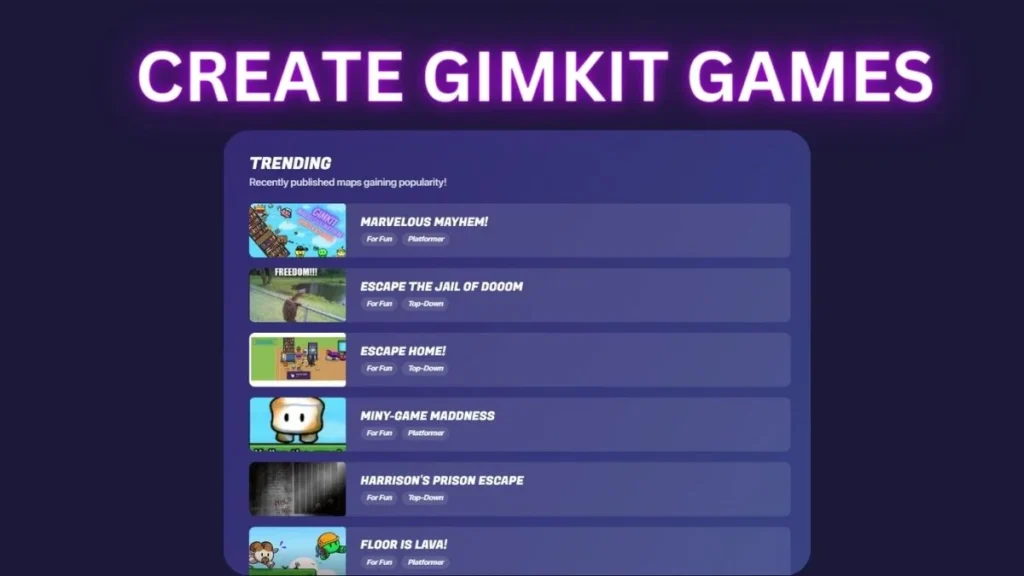Gimkit is a great platform for any educator or trainer who wants to add some more entertainment and engagement to their classes. As a game show-style application, Gimkit not only promotes learning but also increases engagement and motivation. If you are willing to make your own Gimkit games, here is a detailed tutorial to help you out.
Why Gimkit?
Gimkit offers several advantages for educators and students alike:
- Gamified Learning: The use of games in the learning process enhances the experience and promotes positive rivalry.
- Customization: Games can be made to address certain themes and goals.
- Variety of Game Modes: To avoid repetition, Gimkit has several game modes you can play.
- Real-Time Feedback: Students get their results instantly to know their strengths and weaknesses.
- Data Tracking: Gimkit gives feedback on how well the students are doing so that you can determine their comprehension.
Getting Started: Creating Your First Gimkit Game
- Sign Up or Log In: If you do not have an account, you can create one at www.gimkit.com for free.
- Create a New Kit: On the dashboard, click on “New Kit. ” A kit is a set of questions that will serve as the framework of your game.
- Add Questions: There are several ways to add questions:
- Create from Scratch: Submit your question, the correct answer(s), and the wrong answer(s).
- Import from Quizlet: If you already have created a Quizlet set, you can easily import it.
- Use the Question Bank: Gimkit has a library of questions for different topics.
- Enhance Your Questions: Ensure that your questions are interesting by including images, audio, or videos.
- Choose a Game Mode: The various game modes that Gimkit has are Classic, Team Mode, Trust No One, and many others. Choose the one that corresponds to your learning objectives.
- Customize Game Settings: Adjust the game settings, such as time limits, point values, and power-ups.
- Host a Live Game or Assign for Practice: You can either host a live game with your students or assign the kit for them to practice independently.
Guidelines on How to Develop Good Gimkit Games
- Clear Learning Objectives: The first thing that you need to do is to define the learning objectives for the game.
- Mix Question Types: Use different types of questions (multiple choice, true/false, and short answer) to accommodate different learning modalities.
- Use High-Quality Images and Media: The use of visuals can make the learning process more enjoyable and your game more attractive.
- Align Questions with Curriculum: Make sure that the questions are relevant to the learning objectives set in your curriculum.
- Keep it Fun: Use funny questions and game themes to make your game more fun and engaging.
- Provide Feedback and Discussion: At the end of the game, ask the students the questions and concepts that were presented in the game.
Conclusion
Gimkit can help revolutionize the learning in your classroom or training sessions by enhancing the learning process. Following this guide and implementing the mentioned tips will help you in designing interesting and informative Gimkit games for your students.
